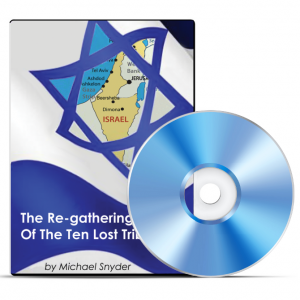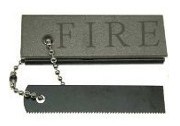 When you think of items to pack in a survival kit, what comes to mind? You probably think of things like water, energy bars, batteries, a first aid kit and blankets. When most people think of packing a survival kit, they think of basics that are necessary to keep their families alive. Things like spare clothes and shoes seem like dead weight when you are thinking in terms of a life and death scenario. Spare clothing is not a luxury in an emergency, however. Clothing and shoes are necessary to keep your family warm, dry and protected from things like debris and hazardous waste that can be spilled during emergency situations. Dry, clean clothing and shoes that fit can also make the difference between a comfortable stay in a temporary shelter and a week spent wearing someone’s old golf clothes.
When you think of items to pack in a survival kit, what comes to mind? You probably think of things like water, energy bars, batteries, a first aid kit and blankets. When most people think of packing a survival kit, they think of basics that are necessary to keep their families alive. Things like spare clothes and shoes seem like dead weight when you are thinking in terms of a life and death scenario. Spare clothing is not a luxury in an emergency, however. Clothing and shoes are necessary to keep your family warm, dry and protected from things like debris and hazardous waste that can be spilled during emergency situations. Dry, clean clothing and shoes that fit can also make the difference between a comfortable stay in a temporary shelter and a week spent wearing someone’s old golf clothes.
In an emergency that requires evacuation, you can expect to have little time to gather the things you will need, including crucial papers and family photo albums. Even if packing spare clothing is at the top of your priority list, gathering several days’ worth of clothing for an entire family can be a time-consuming undertaking. What happens if you accidentally grab the baby’s outgrown sleepers or forget to put your wife’s clean underwear in the bag?
In an emergency you can’t count on the stores to be open, and even if they are open, there will be lots of people in need of clothing and shoes. There’s no guarantee that any store you can reach will have what you need. The time to pack spare clothing and shoes for your family is before an emergency.
Different sources recommend different amounts of clothing. Some experts say that one or two changes of clothing are plenty, but there is no way to predict how long it will be before you can use a washer and dryer. You may not even have the opportunity to wash clothes by hand. If you are worried about the expense, remember that you don’t have to pack your best clothes. Each family member should have one unstained, unworn outfit as well as a pair of shoes, but the rest of the clothing can be old or stained, as long as it is clean and suitable for the weather in your area.
If you decide to be a minimalist and only pack one or two outfits, be sure to include an extra pair of comfortable shoes and a week’s worth of clean socks and underwear for everyone. Rain coats or ponchos, hats, gloves and jackets or hooded sweatshirts can be lifesavers if you are caught outside in the rain or cold. Even warm climates are subject to cold spells, and if you get wet, you may also get chilled. Warm clothing can help you to get warm again.
When you choose shoes to pack, fight the urge to save money by buying flip-flops or rubber sandals. During an emergency you may have to walk through streets that are covered with sharp debris or spilled chemicals. You might even have to wade through flooded streets filled with hidden dangers. Shoes should have sturdy uppers that cover the entire foot and thick, skid-resistant soles.









